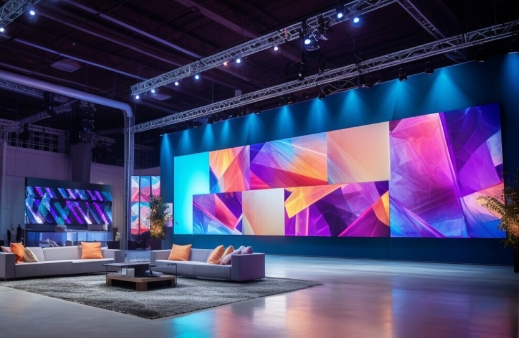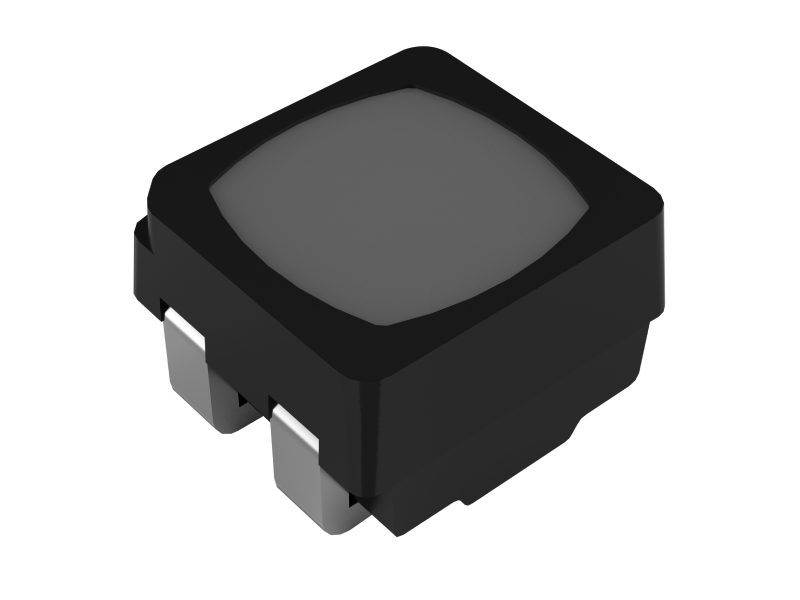Indoor LED display, as the name defines, mainly appears at indoor environments, such as the inside of shopping malls, retail outlets, grocery or book stores, etc. Indoor LED display is an important way to advertise for your indoor business and attract possible buyers of your products or clients of your services. So what is an indoor LED display? What features does it have? What does it bring to your business? Let’s proceed to discover more details about indoor LED display.

An indoor LED display refers to a type of display technology that is specifically designed for indoor environments. These displays utilize light-emitting diodes (LEDs) as the primary source of illumination to create vibrant and visually appealing content.
Indoor LED displays are commonly used in various settings such as retail stores, shopping malls, airports, stadiums, conference rooms, and other indoor venues. Since indoor LED displays are designed to watch from short distances, they’re mostly fine pixel pitch LED displays.
As an advanced option for advertising, indoor LED displays offer several advantages over traditional display technologies.
High Brightness and Contrast:
LED technology enables indoor displays to achieve high levels of brightness, ensuring excellent visibility even in well-lit environments. Additionally, LED displays provide a high contrast ratio, resulting in vivid and sharp images.

Kinglight provides various LEDs for indoor displays with high brightness
Fine Pixel Pitch:
Indoor LED displays often have a smaller pixel pitch, which refers to the distance between the center of one LED pixel to the center of the adjacent pixel. A smaller pixel pitch allows for higher pixel density, resulting in enhanced image quality and improved viewing experience, especially when the display is viewed up close.
Seamless Modular Design:
LED displays are typically designed with a modular structure, meaning they can be assembled from individual LED panels. This modular design allows for flexibility in display size and aspect ratio, making it easier to customize and configure indoor LED displays to fit specific installation requirements.
Energy Efficiency:
Indoor LED displays are known for their energy-efficient operation. LEDs require less power compared to traditional display technologies, contributing to reduced energy consumption and lower operating costs.
Wide Viewing Angles:
LED displays offer wide viewing angles, ensuring that the content remains visible and legible from various positions within a space. This feature is particularly important in venues where audiences may be viewing the display from different angles.
Content Flexibility:
Indoor LED displays support dynamic content and can display a wide range of media, including videos, images, text, and animations. They provide the flexibility to showcase engaging and interactive content that can capture the attention of viewers.
Integrating an indoor LED display into your business can bring several benefits and enhance various aspects of your operations. Here are some ways indoor LED displays can positively impact your business:
Enhanced Visual Impact:
Indoor LED displays are highly vibrant and visually striking, capturing the attention of customers and visitors. They create an immersive and engaging environment, allowing you to display dynamic content, advertisements, promotions, or branding messages with high visual impact. This can help attract and retain customers, increase brand visibility, and leave a lasting impression.
Improved Communication:
LED displays provide an effective way to communicate information, announcements, directions, or updates to customers and employees. Whether it’s displaying real-time data, schedules, menus, or wayfinding information, LED displays ensure that your messages are conveyed clearly and efficiently. This can lead to improved customer experience, reduced confusion, and enhanced internal communication within your business.
Increased Advertising Opportunities:
Indoor LED displays offer advertising opportunities within your business premises. You can showcase your products, services, or special offers directly to customers, influencing their purchasing decisions and promoting upselling or cross-selling. With the flexibility to display dynamic content, you can create engaging advertisements or promotions that grab attention and drive sales.
Flexibility and Customization:
LED displays allow you to customize and adapt your content based on your specific needs. You can easily update and change the displayed information, ensuring it remains relevant and up to date. This flexibility enables you to target different customer segments, adjust messages based on time of day or season, and quickly respond to market trends or business requirements.
Branding and Differentiation:
Utilizing an indoor LED display can reinforce your brand identity and create a unique atmosphere within your business space. Tailoring the display’s content, colors, and design to align with your brand image helps in building brand recognition and differentiation from competitors. It adds a modern and innovative touch to your business, showcasing your commitment to staying ahead in terms of technology and customer experience.
Revenue Generation:
Indoor LED displays can serve as an additional revenue stream for your business. By partnering with other businesses or advertisers, you can rent out advertising space on your display, generating income while promoting complementary products or services to your audience. This can contribute to offsetting the initial investment in the LED display and potentially create a profitable advertisement platform.
In conclusion, carefully planning and strategizing the implementation of an indoor LED display will gain much better in your business objectives and target audience. Consider factors such as display size, location, content management, and integration with existing systems to maximize the benefits and achieve the desired outcomes for your business.